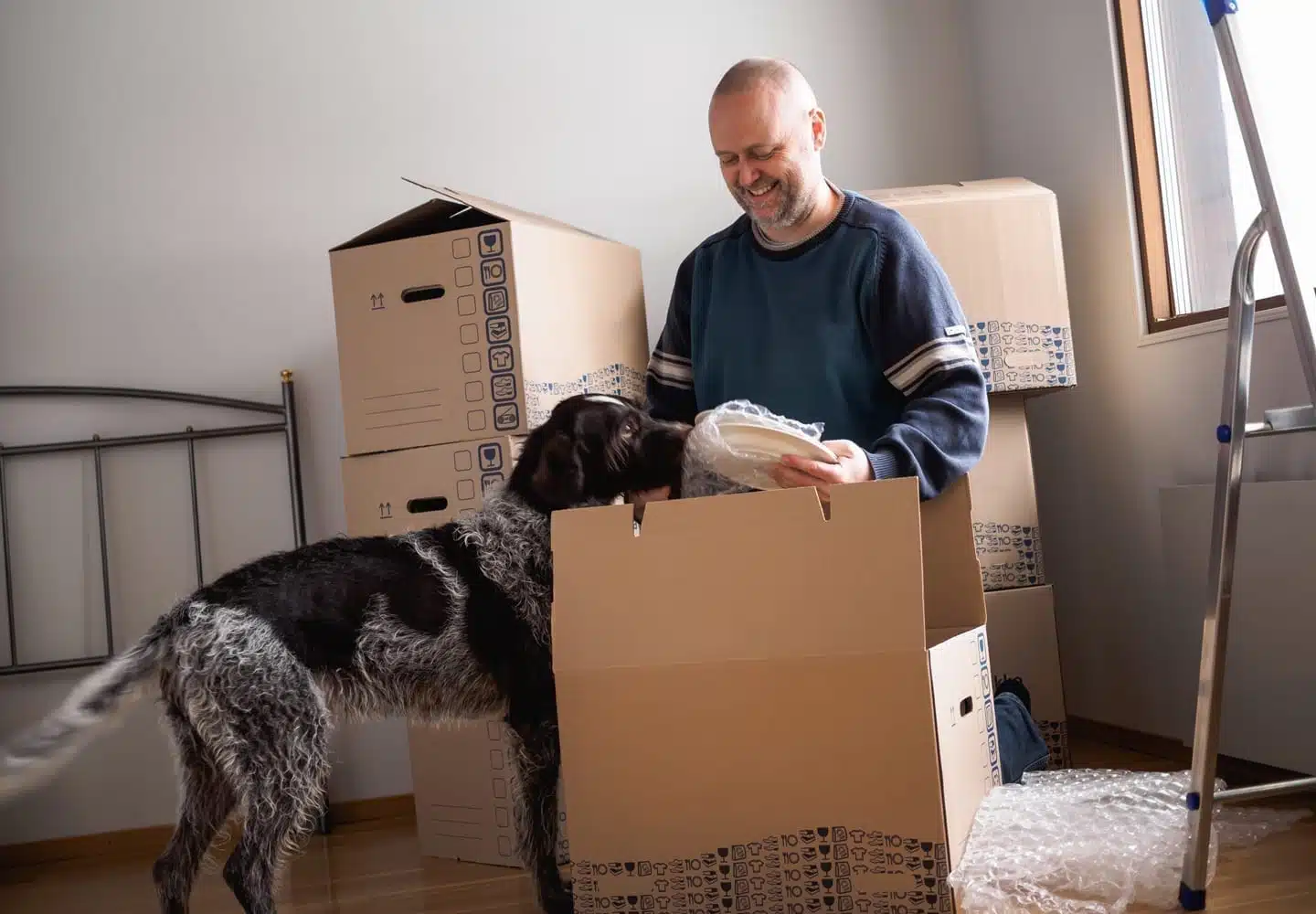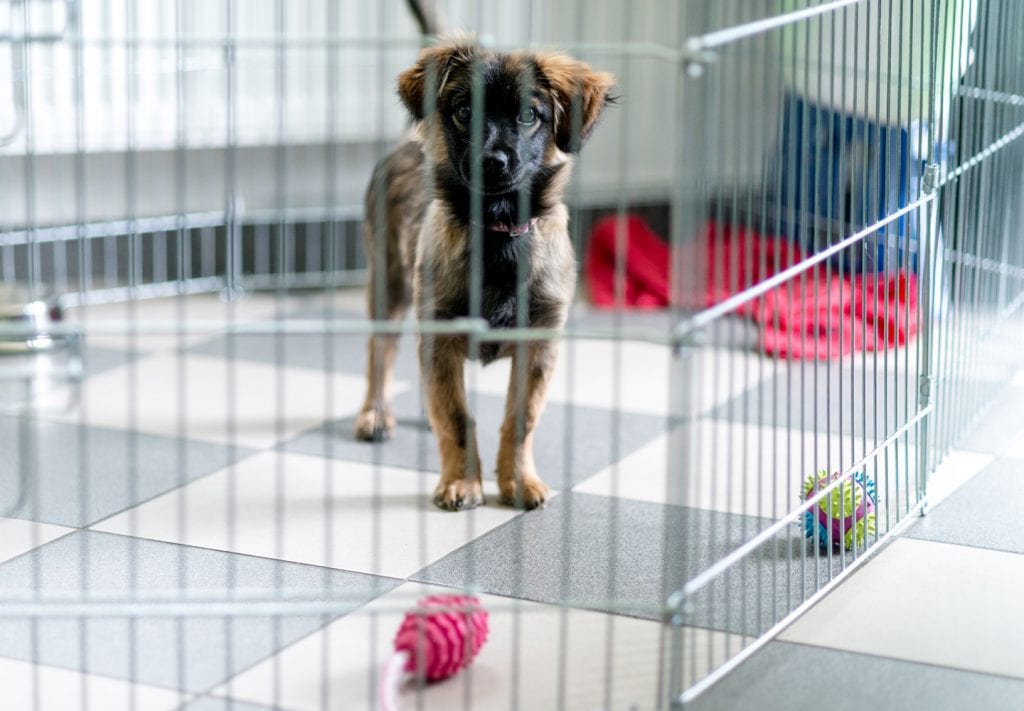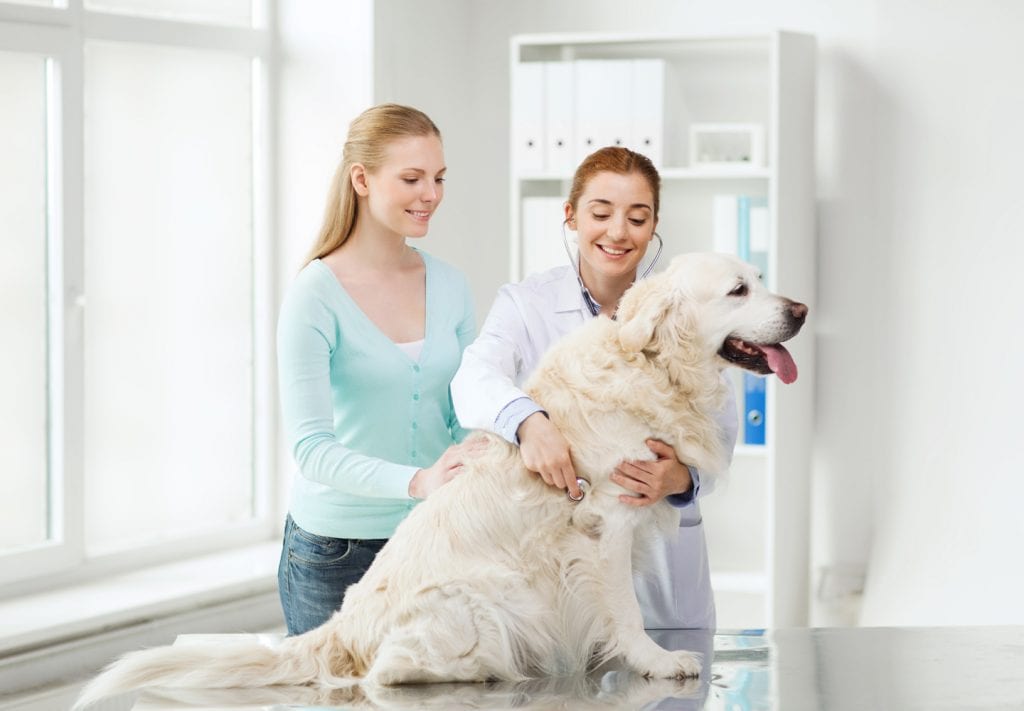
Make Moving Comfortable for Your Pets
Moving Tips and Hacks
Moving is stressful for everyone, including our furry family members. Between the snuggles and nuzzles, it’s easy to overlook how difficult it is moving with pets. They’re used to their little corner of heaven in the house or that cool spot right on the kitchen floor tiles. Our pets don’t understand moving, and while they may be excited for whatever the future holds (as long as you’re in it), they’re likely to experience some stressful situations.
Here are some tips on how to make sure Fido and Whiskers have as successful and comfortable a move to your new home — whether you're moving locally or across the country — as (we hope) you do!

Start the Packing Process Early
Instead of cramming your entire household in one or two late-night packing sessions, start the process as soon as you can, if only for the sake of your pets.
If your dog is crate-trained, it’s easier to maintain a regular schedule and routine with them. Depending on the age of your dog, you could try introducing a crate to your pup weeks before the move to get them familiar with it. Cats are typically already poking around new boxes and may even wind up voluntarily sleeping inside their carrier (a win-win!).
We recommend starting the packing process six to eight weeks before your moving date. If you’re ordering a portable moving container, have it delivered at your earliest convenience so you can load it at your leisure. Hold off for now on packing up your pet’s accessories, such as your dog crate, cat carrier, beds, and any favorite toys; being surrounded by their familiar belongings will help them stay comfortable.

Pack a Pet Travel Box
Set one box aside to carry your pet’s food, feeding dishes, and a favorite toy or two with you in the car. Larger items like beds should be boxed on your final moving day. Keeping their routines as ordinary as possible will reduce their stress levels and (hopefully) their desire to act out. You don’t want to be cleaning up pee stains and chewed shoes on the day of your move if you can help it.
It’s also a great idea to avoid washing your pet’s blanket or bed prior to your move. Your pet will appreciate the familiar smells of their favorite things, especially during those first few days in the new home.

Call or Visit Your Vet Before the Move
Reach out to your vet before moving with your pet. They can suggest behavior modification techniques or medications to make the trip more comfortable.
According to Northeast Animal Hospital Veterinarian, Dr. Mark Scribano, you can give your dog over-the-counter Benadryl to calm them down before a big move. “If you plan on giving your dog medicine to chill them out, use no more than one milligram per pound of Benadryl. So if your dog is 50 pounds, they can have 50 milligrams of Benadryl. Also, give them their dosage weeks or days before you move, so you can see how they will be affected.” He cautions pet owners to always check with their vets first before administering any medicines, even over-the-counter ones.
It’s a good time to make sure all vaccines are up-to-date and that you have a good supply of regular medications. Get a copy of your pet’s records if you’re switching vets or need to demonstrate compliance with apartment rules or city ordinances.
Update Their Tags
While you’re thinking about it, this is a great time to get a new tag for your dog or cat’s collar with your new address on it. Microchipping your cat or dog is also another way to ensure they could be returned to you if they do get lost during or after the move.
Even if your cat is an indoor animal, you should get a collar and tag for the move in case they get lost. A website called dogIDs.com has a nice selection of fun and creative collars for dogs. If you’re looking for a one-of-a-kind collar for your feline friend, check out etsy.com for some handcrafted options!
On Moving Day
While it would be ideal to have your pets stay with a friend on moving day, it might not be practical. If they stay home with you, keep them away from noise and confusion in a closed-off room.Clearly mark the door, “Do Not Disturb” so movers and friends don’t accidentally let your pet out. Make sure they have plenty of water, and leave your cat’s litter box in the room as well. Pee pads are also a great idea in case your dog has an accident. Also pop in occasionally with treats to let them know all the commotion is nothing to be worried about.
Traveling by Car
Always transport small dogs and cats in a secure, well-ventilated carrier. If you’re traveling alone, you might be tempted to keep your pet on the front seat next to you, but like children, they are much safer when their carrier is secured by a seat belt in the back seat. There are even seat belts designed for large dogs.
If your trip is a long one, you maybe tempted to make as few stops as possible. However, frequent stops will give your dog a chance to take a bathroom and water break. For cats, it will give them a chance to eat and use the litter box. Many stores like Walmart and websites like Amazon now carry portable litter boxes that you can use in the car.
"Think about it this way," says Dr. Scribano, “Us standing in a car is the equivalent for a dog or cat sitting in a car. They aren’t able to brace themselves when you make a turn or stop the car for a light. Crating a dog or cat in the car is the best way to keep them safe while traveling.”
If you’ll be making an overnight trip, there are thousands of pet-friendly hotels to choose from. Bringfido.com is one website you can use to find one along your route.
At Your New Home
You know your pet better than anyone else. Some are adventurous and would do just fine roaming the new digs as soon as you arrive. For other pets, however, you may need to enclose them in a separate room with their food, water, and litter box. Even your great, big Labrador may appreciate getting to know a single room first. After a day or two of acclimating to the new sounds and smells, they’re far more likely to relax and comfortably explore the rest of their new home.
While you’re all getting used to your new space, check that your new window screens are secure, remove poisonous plants, and look for any pest-control poison traps that may have been left behind.
Finally, you’ll want to reestablish normal routines as soon as possible. If feeding time is 5:00 p.m., feed them at 5:00 p.m., even if you’ve just traveled through two time zones and their internal clock isn’t synced up yet.
Moving with pets is no easy task. Not only do you need to think of yourself, your travel logistics, and your own food, but you should also be mindful about how your pet is experiencing the move. Prepare for the worst, and you’re all but guaranteed seamless travels with your best furry friend. When you’re all moved in, give them a new toy to say thanks for coming along on the journey!
Related Articles
Comments
Leave a Comment
Your email address will not be published. Required fields are marked *
